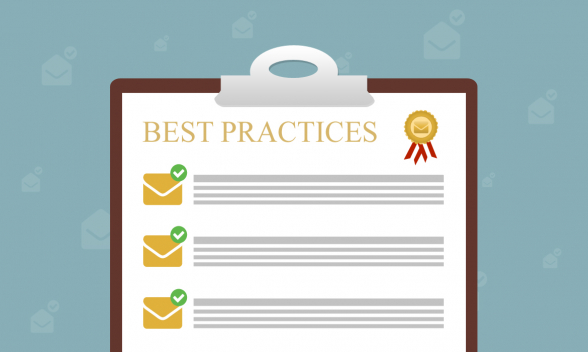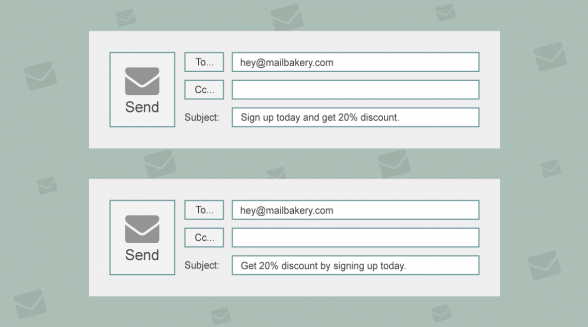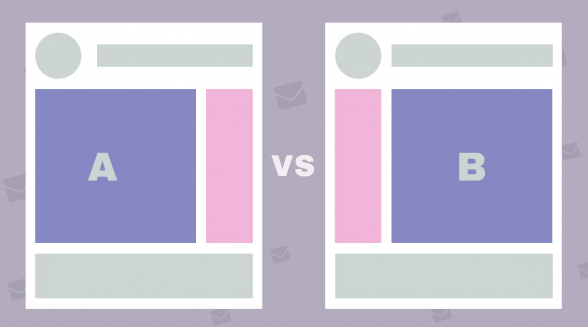A/B Testing Improves Your Email Marketing
Reading Time: 4 minutesA/B testing allows you to test two different versions of an email, pick up the one that performs better and send it to the rest of your recipient list. It will show you how small changes may make big difference for your email campaigns.
A/B testing is a great way of improving the performance of your email marketing with few resources and without any unnecessary risk. This is possible because you have the opportunity to gain reliable results by conducting your tests with a small sample group of email subscribers, thus avoiding the risk of jeopardising your whole campaign.
Best Practices in A/B Testing
1. When A/B testing you have to have an idea why a certain variation of your email might perform better. Don’t just A/B test for the sake of testing.
2. Send your A/B test campaigns simultaneously to avoid skewing your results by time-related factors.
3. First decide what you want to A/B test. You may have a list of scenarios you wish to test and measure, but you have to test one thing at a time. Otherwise you wouldn’t be able to pinpoint the change that drives the results you see.
4. Try testing your entire email. Instead of A/B testing smaller parts of your email, try to design a completely different email. This may require more resources, but tests like this yield the best results and the biggest improvements. Once you have a clear winner, you may continue with the email fine tuning.
5. Don’t ignore small tweaks when A/B testing. You may rightfully expect that bigger changes should lead to bigger results, but a small change like simply switching images may also help your email campaign performance. Along with that, smaller changes are easier to test and measure.
6. A/B test with as large test groups as possible to achieve statistically significant results.
7. We advise against hand-picking recipients. This may skew your results. All A/B tests should be conducted with randomly selected recipients.
Testing Your Entire List or Just a Part of It?
Depending on the scenario you wish to test you may decide to include your entire list in the A/B test or send the test campaign to a small part of the list. If the change isn’t too radical you may test it with all your subscribers. Otherwise, you should put two small groups of recipients together.
A/B Testing Subject Lines
Testing variations of your subject line is very important, because subject lines are one of the most noticeable components of your email when displayed in your clients inbox. Most email clients even display the subject line bolded.
If you email a newsletter which usually contains multiple pieces of content, you may try a subject line for each piece of content, so you could see which theme your readers are most interested in.
You may also test the length of your subject line. There is no consensus on the subject line length, but it is usually considered that an optimal length should be around 65 characters.
Try A/B testing capitalized vs non-capitalized words in your subject line.
How you order the words in your subject line may define how easy it is for people to get your message and may potentially affect your email open rate. See for example these two subject lines:
- Sign up today and get 20% discount.
- Get 20% discount by signing up today.
The advice here is to push the benefit before the action required to achieve it.
Personalization is important part of any email marketing strategy. Fit the recipient’s name in the subject line and send an A/B test campaign to see how this will affect the open rate.
A/B Testing Email Copy
With the rise of mobile (and twitter with its 140 characters messages), our attention spam to online information has decreased significantly. People are used to get their daily news and virtually any other kind of online information in a punch line-like style.
The length of your email really depends on both your audience and the complexity of your product, but you may try to A/B test email campaigns with different copy length to see what works best for you.
Email marketers talk more often then ever about personalization in email marketing. Whatever information you have for your subscribers that may identify them in a more specific way (gender, location, company name, etc), use that as variables in your email campaigns and try to word your message so it sounds as if specifically written for the person who reads it. A/B test email personalization with your next campaign and see what the results will be.
A/B test a more positive tone of your message. There are studies showing that a more positively worded message lures people into your offer, makes it easier to understand and increases click-through rates.
A/B test the layout of your message and the text to images ratio. We know that images grab attention quicker than written words, however, there are concepts that images can’t explain the same way words can. Try a single column email layout vs two columns layout or try switching places of different elements.
A/B test your Calls To Action. There are endless combinations for your calls to action and you’ll have to find out the call to action that works best for your campaigns. Check out this article for some specific advise 11 Tips For Effective Calls to Action in HTML Emails.
You may A/B test not only content, but time of send as well. A/B test sending your email at different time of the day or at different day of the week.
Conclusion
Test as often as you can, but be sure to test ideas that you presume should have impact on the open or click-through rates. The more we test, the more intel we gather about our users’ preferences and behaviour and the better content we will be able to create relying on our empirical data. Do not rely on your gut feeling, rely on facts and empirical data.




